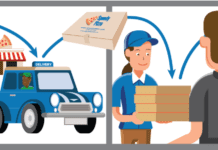Food waste is an after-thought for most, but for businesses in the food industry it can seriously affect their bottom-lines. According to a 2014 report from Value Chain Management International, in Canada alone, $31 billion worth of food ends up in landfills or composters each year. That is almost three times the worth of the entire Canadian hockey industry going directly into the trash every year.
With sustainability as a high global priority, food companies need to consider long-term solutions to reduce waste and make their operations sustainable. In addition to reducing the environmental impact, reducing food waste will also help businesses cut costs and drive profits as a result of curtailed food waste overhead and improved efficiencies.
To affect change, companies need to understand the real implications of wastage and explore new opportunities and processes.
Food for thought
In 2018, going green makes sense for food manufacturers. Doing so not only will help drive growth and customer loyalty, it can also directly impact the business financially.
Reducing food waste can pay dividends and have significant positive effect on a company’s bottom line, helping reduce purchasing costs and allowing for higher volumes of production. According to a 2017 report from Champions 12.3, over half of businesses that invested in reducing food waste earned a 14-fold or greater return on their investment.
Thankfully, businesses are starting to recognize the value of reducing food waste and employing a sustainable supply chain. The challenge for manufacturers is driving the change and implementing the proper processes to reap the benefits.
Putting plans into action
Many manufacturers are pledging to reduce “farm-to-fork” waste by taking steps at each stage of the supply chain to drive change. While committing publicly to making this change is a great thing, the real challenge is how to meet this pledge.
To make significant improvements, businesses need access to key insights to identify and reduce inefficiencies throughout the supply chain. Implementing the right digital tools can help with this and have immediate effects on the business. Impacts could include a more effective match in supply and demand, the ability to track loss and waste with greater accuracy, and capabilities for dynamic pricing – all of which could save manufacturers millions in lost food and efficiencies.
Business-management solutions, such as enterprise resource planning (ERP) software, can help identify efficiencies across traditionally siloed business units and systems. By bringing together critical data, and analysing it in real-time, businesses can identify new ways to streamline processes across the supply chain.
A handful of start-ups are also developing solutions focused on food waste, enabling manufacturers to track the freshness of products and monitor the temperature and location of containers in real-time.
There isn’t a one-size fits all solution, so companies will need in-depth understanding of their supply chains, as well as the helpful tools that can play critical roles in implementing effective long-term change. Technology will be central to tackling food waste reduction, and will ultimately deliver increased profits for businesses.




















